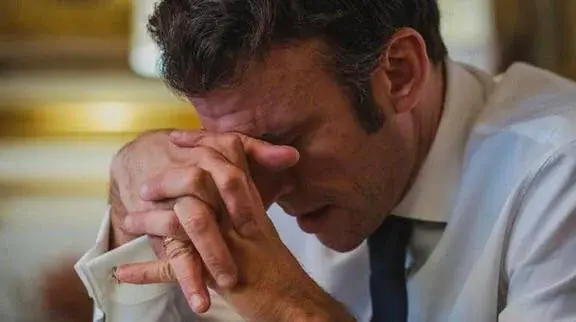I seriously am baffled by this conflict. One side (rsf) is apparently being supported by both Iran and Ukraine, the other (saf) by the UAE, and there’s also the SRF alliance/coalition which consists of a bunch of other factions. What is going on?
It’s a big mess. I found this article helpful: https://www.nplusonemag.com/issue-46/politics/prelude-to-a-coup/ Be warned, it’s very long and mixed with the author’s personal experiences working in Sudan. I put a bunch of pull quotes below to help you get the gist or hop around on the timeline.
Edit: a short summary is that the faction you support depends on the regions and resources you want access to.
From this inauspicious material, Bashir created a lasting dictatorship, dependent on personal relationships and backroom deals. He became the fixer-in-chief, ceaselessly maneuvering at the top of an unstable coalition of Islamists, security men, and merchant capital. In 1999, oil began to flow in Sudan, most of it extracted from the south of the country—the hotbed of the civil war. Oil enabled Bashir to cut a deal with Sudan’s cities. He would provide cheap commodities and subsidies, paid for in petrodollars, if they tolerated dictatorship and repression in the peripheries. As long as the commodities flowed, the cities could be placated. To police the impoverished peripheries, in revolt against their marginalization by the country’s elite, Bashir raised militias. As a form of payment, he encouraged these forces to loot and pillage, effectively franchising the state’s monopoly of violence.
…To coup-proof his regime, Bashir created a Hydra of military organizations. The SAF, which Bashir underfunded to stave off threats from competing generals, was soon rivaled by the National Intelligence and Security Service (NISS)—as much a military force as an intelligence-gathering operation—to name only the two most notable of the monster’s heads. Each security organ was a law unto itself. During the 1990s, Bashir privatized much of what remained of the state, selling it off to his associates. This fire sale allowed each military organization to develop its own economic empire, controlling banks, construction companies, and real estate. The security services were a set of fractious businesses profiting from a militarized economy.
…One young commander, however, remained loyal to Bashir and was chosen to lead the Rapid Support Forces (RSF), a paramilitary group recruited from Darfur’s Arab population. Mohamed Hamdan Dagalo, otherwise known as Hemedti, was at the time only a junior Janjaweed officer, but he quickly grew close to Bashir, who reportedly nicknamed him “Himyati” (my protector). From 2014 to 2016, the RSF inflicted a series of defeats on the Darfuri rebel groups. Hemedti’s reward was control of Sudan’s most lucrative gold mine during a nascent gold rush that saw the number of miners in Sudan increase from two hundred thousand to more than a million.
…As demonstrations intensified in the first months of 2019, Bashir declared a state of emergency. The FFC seized its chance and, on April 6, called for a march on the headquarters of the SAF, followed by a sit-in, replete with white tents and free food. The security services were divided over how to proceed. It was one thing to kill civilians in the peripheries, quite another to kill young protesters in Khartoum; the soldiers could well be firing at members of their own families. On April 10, Bashir allegedly gave an order to forcibly disperse the sit-in. By April 11, with the agreement of Hemedti, his great protector, Bashir was deposed. The rivalrous security services had found a common cause in the regime’s fragility: survival. They seized power in a coup, offering up Bashir as a scapegoat in the hope that his replacement, Ahmed Awad Ibn Auf, an SAF general, would be able to preserve military control of the state.
…Now, two years on, the transition was ailing. The economy was in free fall, partly due to austerity measures imposed at the IMF’s behest. Street protests were calling for the resignation of Abdalla Hamdok, the soft-spoken former UN economist who was serving as the prime minister in the transitional government, and a number of political parties had withdrawn from the FFC. A month earlier, a mysterious coup attempt, reportedly carried out by soldiers loyal to Bashir, was suppressed by the SAF.
…Hamdok had replaced the energy of 2019 with proceduralism. When he became prime minister he was perhaps the most popular leader in Sudanese history, but he didn’t become a revolutionary icon or a populist figure. Rather than focus on making political coalitions, his government painted gray on gray, one spreadsheet after another. Far from being the protector of the revolution, he had abandoned it for the technocratic fantasy of a smooth transition. That fantasy had consequences. Appeasing the international community might have gained Hamdok some friends in Washington, but it alienated the domestic political constituencies on whose support he relied.
…(October 2021) …At dawn, the military had taken control of the streets. Hamdok had been arrested. The coup was happening. Later that day, Burhan announced a state of emergency. Politicians were rounded up and arrested. Some of the rebel leaders, including Minnawi and Jibril, came out in support of the coup. Others were detained and beaten. Burhan and Hemedti, united by their opposition to civilian rule, dissolved the transitional government and announced that a technocratic administration would be put in place prior to elections in 2023. Protests began across the country, especially in Darfur, where the military used live fire to disperse demonstrators.
…On December 5, 2022, some members of the FFC, along with a few other political parties, signed a deal, the so-called Framework Agreement, with the military junta. While the UN and Western diplomats pronounced their satisfaction, the agreement was met with protests across the country. “The FFC,” one Western analyst told me, “has again sold out the street.” The agreement itself was shrouded in secrecy and seemed to contain little of substance. All the real issues, including the place of the military in government and the status of the RSF, which was supposed to be absorbed into the SAF, were relegated to a second phase of the negotiating process. A series of workshops, transpiring over the period of a single month, were meant to magically resolve these vital, complex matters.
…The fighting in Khartoum began on April 15, after the collapse of the security-sector workshop on the future of the RSF. In the capital, the cartography of protest gave way to the lineaments of war. The RSF, battle-hardened from conflicts in Darfur and Yemen, rapidly took control of much of the city, installing themselves in residential areas. The SAF relied on its airpower to bomb the militia into submission. My friends moved between apartments, sharing messages about safe streets and checkpoints. Time is divided into periods of quiet and periods of gunfire, one friend wrote on Twitter, with the sound of the Adhan prayer the only source of normality.
Despite Hemedti’s efforts to build himself a national constituency during the previous decade, outside Khartoum much of the country remained under the SAF’s control. Darfur was the notable exception, where the conflict in Khartoum exacerbated extant social cleavages between the Arab and non-Arab populations, leading to a brutal conflict with its own dynamics. Outside Darfur, the capital was the focus of the war, and despite some analysts’ predictions of a quick SAF victory, Khartoum largely remained under the control of the RSF, which fed its soldiers by ransacking the city.


